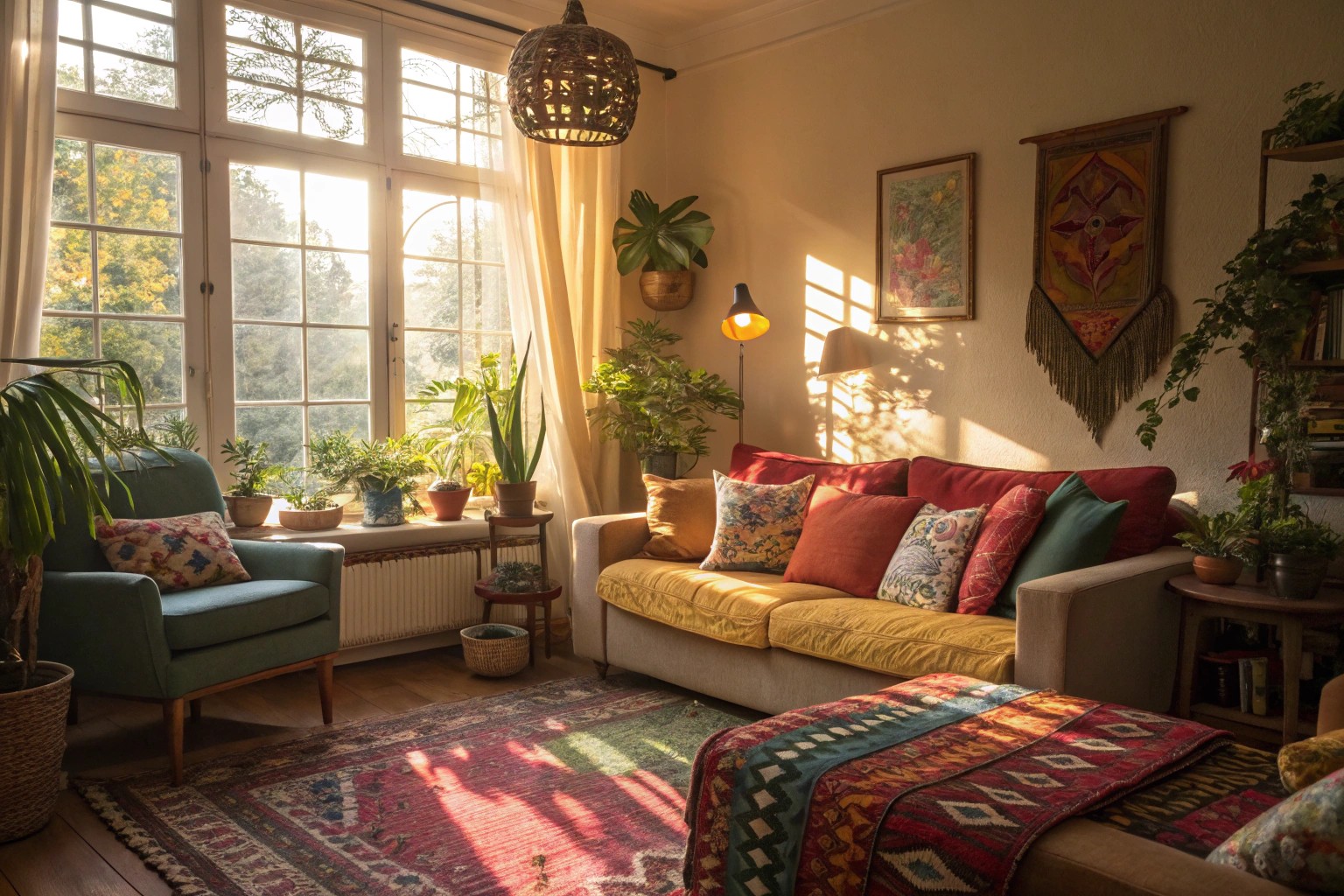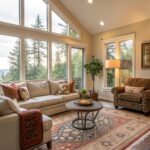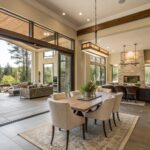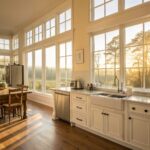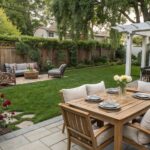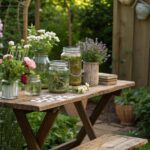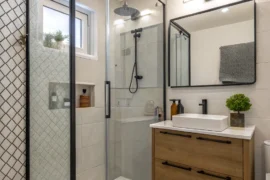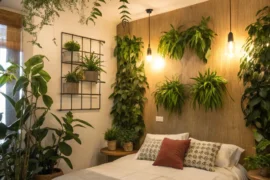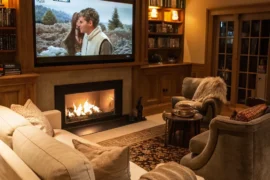Your home is more than walls and furniture—it’s the most personal expression of who you are and how you live. After years of helping clients transform their spaces, I’ve seen firsthand how a thoughtfully designed home can nurture the soul while reflecting individual personality. This guide will walk you through turning your living space into a canvas that authentically expresses your creativity, with practical advice drawn from real homes and real stories.
Understanding Your Canvas: The Foundation of Creative Expression

Before diving into paint colors or furniture arrangements, we need to understand the canvas we’re working with. Every home has its own character, challenges, and innate potential waiting to be discovered.
Assessing Your Space’s Potential
The most successful creative expressions begin with careful observation. Spend time noticing how light moves through your rooms at different times of day. Which areas naturally draw you in? Where do you currently spend most of your time? What architectural features could become focal points?
I often tell my clients to live in their space for a few weeks before making major decisions. One client in Edinburgh was convinced her garden needed a complete overhaul until she observed which areas received the best light throughout the day, completely changing her approach to the design.
The Design Principles That Support Creative Expression
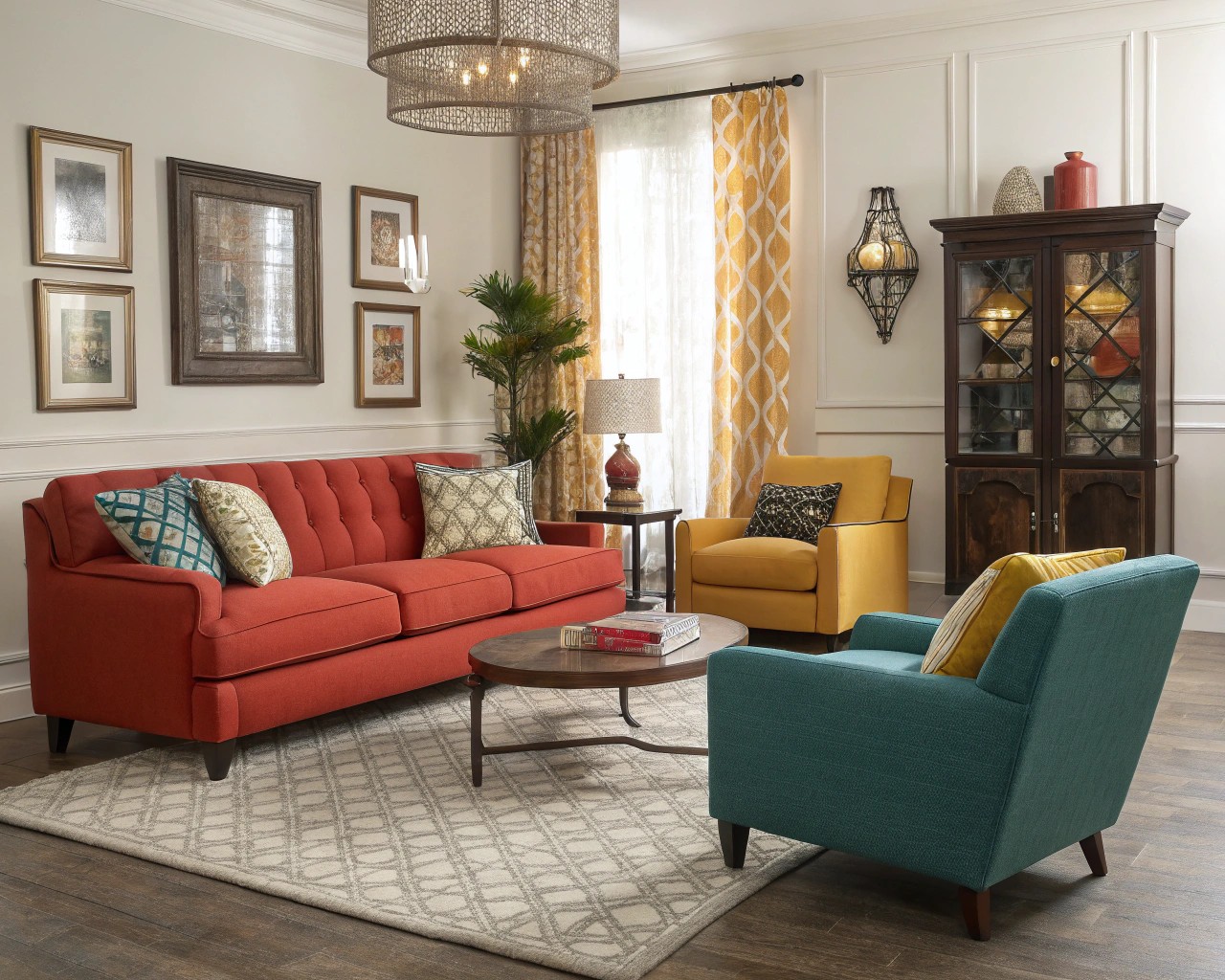
While personal expression is subjective, certain design principles can help structure your creative decisions:
- Balance – Creating visual equilibrium through symmetrical or asymmetrical arrangements
- Rhythm – Establishing patterns of repetition and contrast for visual interest
- Emphasis – Highlighting focal points that express what matters most to you
- Contrast & Variety – Using differences to create energy and interest
- Scale & Proportion – Ensuring elements relate well to each other and the space
- Unity & Harmony – Making sure all elements work together cohesively
- Details – Adding personal touches that tell your story
These aren’t rigid rules but rather flexible guidelines to help articulate your vision more effectively.
Finding Your Creative Voice
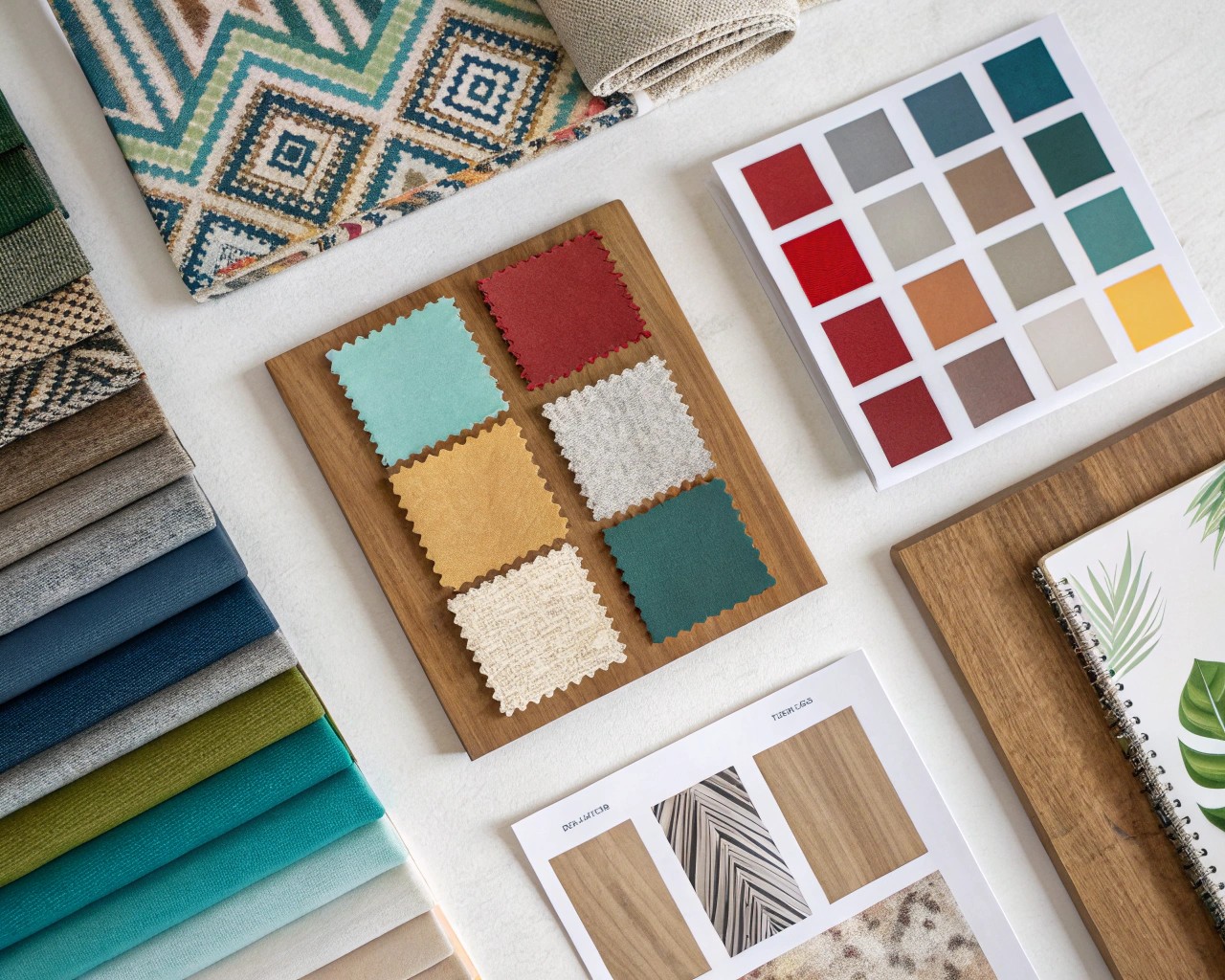
Discovering your personal style is perhaps the most crucial step in transforming your home into a canvas for creative expression.
Identifying What Resonates With You
Start by gathering images that spark joy—from magazines, social media, or travel photos. Look for recurring elements: Are you drawn to clean lines or organic forms? Vibrant colors or subtle neutrals? Antique character or modern simplicity?
One client I worked with couldn’t articulate her style until she realized all her favorite images shared a quality of light rather than specific furniture styles. This revelation transformed her approach to her home renovation.
Drawing Inspiration From Multiple Sources
Your creative expression doesn’t need to fit neatly into a labeled design style. The most authentic homes draw inspiration from diverse sources:
- Art Collections: Your favorite paintings can inform your color palette
- Natural Elements: Gardens and landscapes can inspire organic, flowing designs
- Travel Memories: Places you’ve visited can influence textures and spatial arrangements
- Personal Heritage: Cultural traditions can provide rich design inspiration
- Everyday Objects: Even mundane items can spark creative ideas when viewed with fresh eyes
Balancing Trends With Authentic Expression

While trends offer fresh inspiration, focusing too heavily on them can lead to a space that quickly feels dated or, worse, doesn’t feel like you at all. Consider trends as invitations to experiment rather than rules to follow. Your home should first and foremost reflect your authentic self.
Room-by-Room Expression Guide

Each area of your home offers unique opportunities for creative expression. The following table outlines how different spaces can become canvases for your artistic vision:
| Room | Expression Opportunities | Practical Considerations | Inspiration Sources |
|---|---|---|---|
| Living Room | Statement furniture, art displays, conversation areas | Traffic flow, seating comfort, versatility | Art collections, travel souvenirs, color preferences |
| Bedroom | Textiles, lighting, personal collections | Sleep quality, storage needs, privacy | Favorite retreats, sensory preferences, personal rituals |
| Kitchen | Cabinet finishes, backsplashes, displayed collections | Work triangle, storage, durability | Cooking style, entertaining habits, cultural heritage |
| Bathroom | Fixtures, tile work, unexpected art | Water resistance, cleaning ease, ventilation | Spa experiences, nature elements, favorite retreats |
| Outdoor Spaces | Plantings, hardscaping, outdoor rooms | Climate, maintenance, privacy | Favorite landscapes, seasonal preferences, activity needs |
Case Studies in Creative Expression
Nothing illustrates the transformative power of personal expression better than real examples. These case studies showcase how individuals have turned their homes into authentic reflections of themselves.
The Maximalist Mini Loft: Childhood Nostalgia Reimagined
In Paris, architect Anthony Authié transformed a small apartment into a vibrant expression of childhood nostalgia. The space features pink spiny table legs inspired by Mario game characters, yellow octopus-shaped stools, and a metallic kitchen reminiscent of Doctor Freeze. Fiery curtains and pillowcases designed by Authié himself add whimsy against grey granite backdrops.
What makes this space successful isn’t just its bold colors but the coherent vision behind them. Every element, while playful, serves the overarching concept of nostalgic video game references transformed into sophisticated design.
Key Takeaway: Even highly personal references—like childhood video games—can create sophisticated environments when approached with intentional design principles.
Art-Inspired Elegance: The Kensington Transformation
When tasked with renovating a late Queen Anne style mansion in Kensington, designers discovered their client owned an extensive collection of works by Maltese artist Ġoxwa Borg. These paintings—marrying traditional techniques with modern sensibilities—became the perfect inspiration for the project.
The main drawing room features a five-meter-long credenza topped with Moon Stone and hand-crafted grey gesso doors. Like Ġoxwa’s art, the furniture balances contemporary form with traditional craftsmanship, complementing the classical architecture while introducing modern elements.
Key Takeaway: Your existing collections can provide the perfect foundation for a cohesive design that feels deeply personal and connected to your aesthetic sensibilities.
The Personalized Urban Retreat: San Francisco Condo
A client wanted a city condo in San Francisco to complement her suburban main home—a place for long weekends and post-business meeting respites. The resulting design features soft greys, charcoal, and black neutrals energized with lime green accents. A custom peninsula desk was strategically placed to overlook the city skyline, while contemporary artwork in bold colors completed the palette.
The space successfully balances work, relaxation, and entertainment needs while maintaining a cohesive design language that feels simultaneously energizing and calming.
Key Takeaway: Creative expression can be highly functional when it aligns with your actual lifestyle needs while still reflecting your aesthetic preferences.
The Tranquil Garden Oasis: Edinburgh Transformation
Garden designer Carolyn Grohmann specialized in helping clients transform uninspired areas, like breeze-block wastelands, into beautiful sanctuaries of calm and flowering beauty. Her design approach balances rich plantings with contemporary structural elements, aiming for elegant solutions to practical garden problems.
One client remarked how guests at a summer BBQ felt immersed in a scene worthy of a top garden design magazine, attributing this success to what they dubbed “the Carolyn effect.” This transformation extended the clients’ creative expression beyond their home’s walls, creating an outdoor space that served as a much-needed peaceful refuge, especially during lockdown.
Key Takeaway: Creative expression naturally extends to outdoor spaces, where thoughtful design can create powerful emotional experiences through the interplay of natural elements and human intervention.
Creative Techniques and Approaches
Beyond room-specific strategies, certain creative techniques can be applied throughout your home to express your unique vision.
Color as Personal Expression
Color is perhaps the most immediate and emotional design element at your disposal. Your color choices dramatically affect both the aesthetic and emotional impact of your space.
When creating a home color palette, consider how colors interact not just within rooms but throughout your entire space. Choose colors that complement each other while creating a sense of connection between areas. Using colors with similar saturation and temperature—analogous colors—helps establish tonal coherence throughout your home.
I find that many clients initially hesitate to use bold colors but fall in love once they see how the right shade can transform a space. One family I worked with used a striking blue in their dining room that initially seemed overwhelming on a paint swatch but became the perfect backdrop for family gatherings, imbuing the space with energy and warmth.
Embracing Unexpected Elements
Some of the most impactful creative expressions come from incorporating unexpected elements in surprising ways. Instead of following conventional rules, look for opportunities to showcase your personality through unconventional choices.
This might mean hanging paintings in unexpected locations rather than centered above furniture, incorporating quirky objects as decorative elements, or repurposing items in creative ways. One client transformed an unused bomb shelter into a backlit display gallery for their Lego collection, turning a utilitarian space into a personal museum.
The top 10 ways to infuse personal meaning into your space include:
- Display collections that tell your story
- Incorporate heirlooms or family treasures
- Use colors that evoke significant places or memories
- Commission custom art or furniture pieces
- Integrate elements from your cultural heritage
- Create space for activities that define you
- Use photography to celebrate important people and moments
- Select textiles with personal significance
- Incorporate natural elements from meaningful locations
- Design spaces around rituals that matter to you
Mixed Media Approaches to Home Design
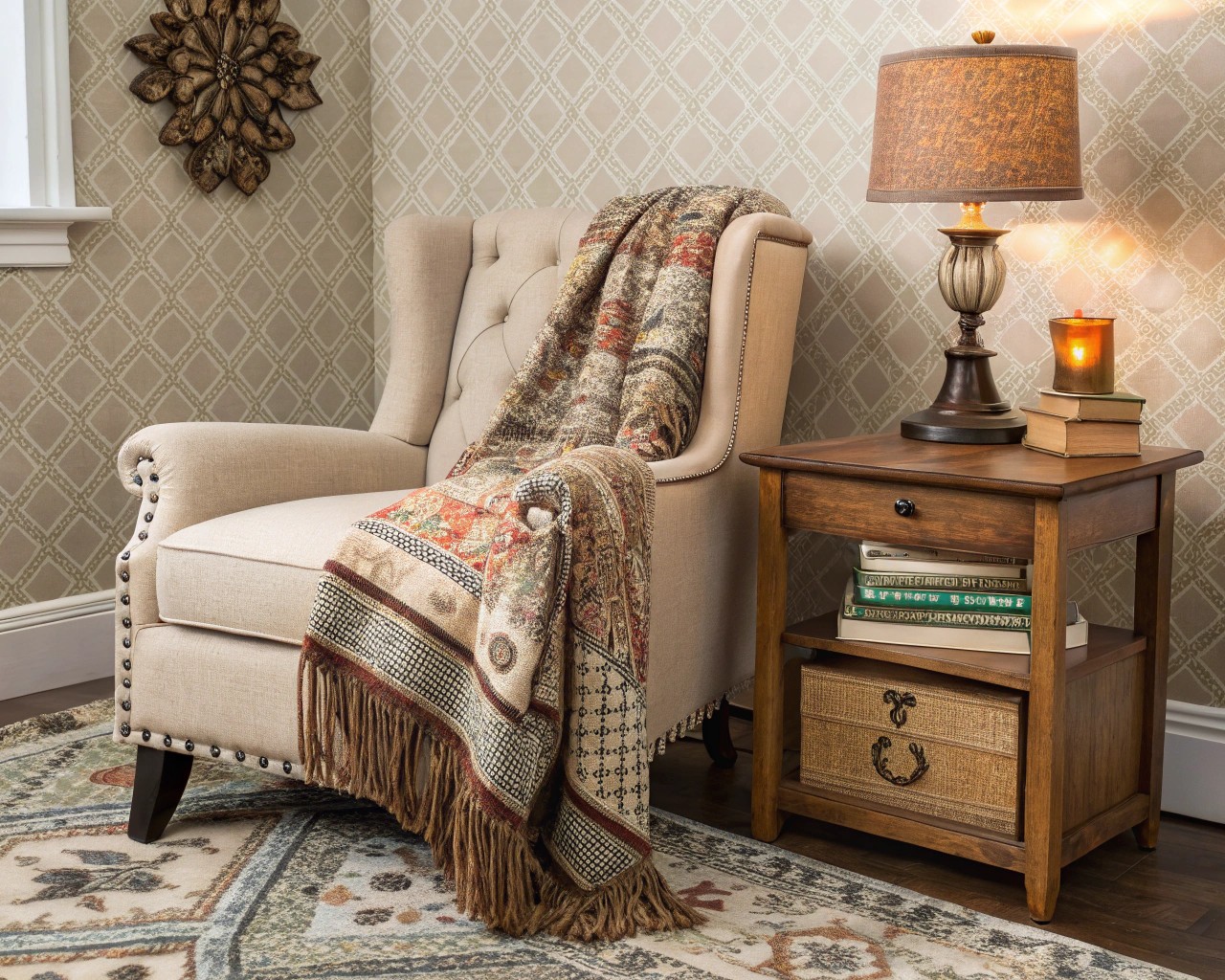
Just as artists combine different materials to create depth and interest in their work, you can apply mixed media approaches to your home design. This might involve:
- Combining different wood tones and metal finishes
- Mixing patterns of varying scales and designs
- Juxtaposing rough textures with smooth surfaces
- Incorporating both vintage and contemporary pieces
- Blending handcrafted elements with manufactured items
The key to successful mixed media design is finding balance. While the approach encourages experimentation, ensure all elements work cohesively to form a unified whole. Don’t be afraid to integrate found objects—buttons, fabric scraps, or natural elements like leaves can add dimension and personality to your space.
Overcoming Common Challenges
Creative expression in your home often means navigating challenges. Here’s how to address some of the most common ones.
Working with Small Spaces
Limited square footage doesn’t have to mean limited creative expression. In fact, constraints often spark more innovative solutions.
In Singapore, architect William Chan designed a space called “Alex” based entirely on the concept of catering solely to the owner’s individual needs. The minimalist space features wood laminate panels that seamlessly integrate to create a multifunctional piece serving as bedroom, office, and storage. Nearly every surface is white-painted or micro-concrete, with a navy blue streak cutting through the space as both design element and lighting feature.
For small space expression:
- Embrace multi-functional furniture and built-ins
- Use vertical space creatively
- Be intentional about each item you include
- Consider how light colors and mirrors can create a sense of openness
- Focus on quality over quantity
Balancing Functionality and Aesthetics
Perhaps the greatest challenge in home design is creating spaces that are both beautiful and practical for everyday living.
We often see clients prioritize either function or aesthetics, but the most successful spaces achieve both. When redesigning a kitchen for a family who entertained frequently, we created a space with professional-grade appliances hidden behind beautiful custom panels. The result was a kitchen that performed flawlessly for serious cooking while maintaining the aesthetic harmony of the adjacent living spaces.
Remember that function itself can be beautiful when thoughtfully expressed. Well-designed storage solutions, properly scaled furniture arrangements, and intuitive traffic flow all contribute to both the function and beauty of your space.
The Budget-Conscious Approach to Creative Expression
Limited resources can actually spark greater creativity as you find innovative ways to express yourself within constraints.
Consider these approaches:
- Invest strategically in a few statement pieces that matter most
- DIY projects that allow for personal expression
- Repurpose and reimagine items you already own
- Shop secondhand for unique pieces with character
- Use paint and lighting—relatively inexpensive elements with outsized impact
One of my most successful projects was for a young couple with limited resources but boundless creativity. We splurged on a single handcrafted dining table that became the heart of their home, while surrounding it with thoughtfully refinished secondhand chairs. The result was more personal and distinctive than if they had purchased a matching set.
The Design Process: Bringing Your Vision to Life
Creating a home that truly expresses your creativity benefits from a structured approach, even as it leaves room for inspiration and evolution.
A Step-by-Step Approach
The design process typically follows these steps, though you may find yourself moving back and forth between them:
- Initial Assessment: Understand your space, its challenges, and possibilities
- Inspiration Gathering: Collect ideas that resonate with you
- Concept Development: Define your vision and goals
- Space Planning: Create a functional layout that supports your lifestyle
- Material and Color Selection: Choose elements that express your personality
- Furniture and Accessory Selection: Find pieces that bring your vision to life
- Implementation: Execute your plan, whether DIY or with professional help
Budgeting is another critical component during planning. As design resources emphasize, setting a realistic budget early on helps allocate funds properly, ensuring the project stays financially feasible while still achieving the desired aesthetic and functional outcomes.
Planning Your Space Effectively
Proper planning prevents disappointing results. Before purchasing anything, it’s wise to map things out.
Begin by creating a basic layout of your space, whether using an app or simple pencil and paper. Accurate measurements are key. Note the locations of windows, doors, and closets. Then, start sketching potential placements for the main furniture pieces like the sofa, TV, bed, or dining table, depending on the room.
Work from large to small—first placing anchor pieces like beds, sofas, and dining tables, then adding medium pieces like bookshelves and coffee tables, and finally incorporating smaller accessories and art. This approach ensures proper scale and prevents overcrowding.
When to DIY vs. When to Seek Professional Help
Some aspects of creative expression in your home are perfect for DIY approaches, while others benefit from professional expertise.
Consider DIY for:
- Painting and decorating
- Arranging furniture and accessories
- Creating artwork and personal touches
- Simple installation projects
Consider professional help for:
- Structural changes
- Complex lighting systems
- Custom furniture design
- Whole-home cohesive planning
Even a single consultation with a professional can provide valuable direction that saves time and money in the long run. Many designers now offer limited-scope services specifically for homeowners who want to do much of the work themselves but need strategic guidance.
Living With Your Creation: The Evolving Canvas
The most beautiful aspect of treating your home as a canvas for creative expression is that it’s never truly finished. Like any artistic endeavor, it evolves as you do.
Your home should feel like a living autobiography—telling the story of who you are, where you’ve been, and what you value. It can become an intimate reflection of your identity and creative passions, with art serving as a powerful medium for storytelling that also inspires and uplifts you daily.
When clients ask me when their home will be “done,” I remind them that the most interesting homes never are. They continue to evolve, incorporating new experiences, responding to changing needs, and reflecting personal growth.
Remember that true creative expression isn’t about achieving perfection or following rules. It’s about creating a space that feels authentically yours—one that supports your life, reflects your personality, and brings you joy every day.
As you live with your creation, allow it to change. Add new elements that speak to new interests. Remove what no longer serves you. Rearrange to accommodate new chapters in your life. Your home, like you, is a work in progress—always evolving, always expressing, always becoming.
In the end, the most successful homes are those where visitors say not “What a beautiful house” but rather “This place is so you”—the ultimate achievement in creative expression.

